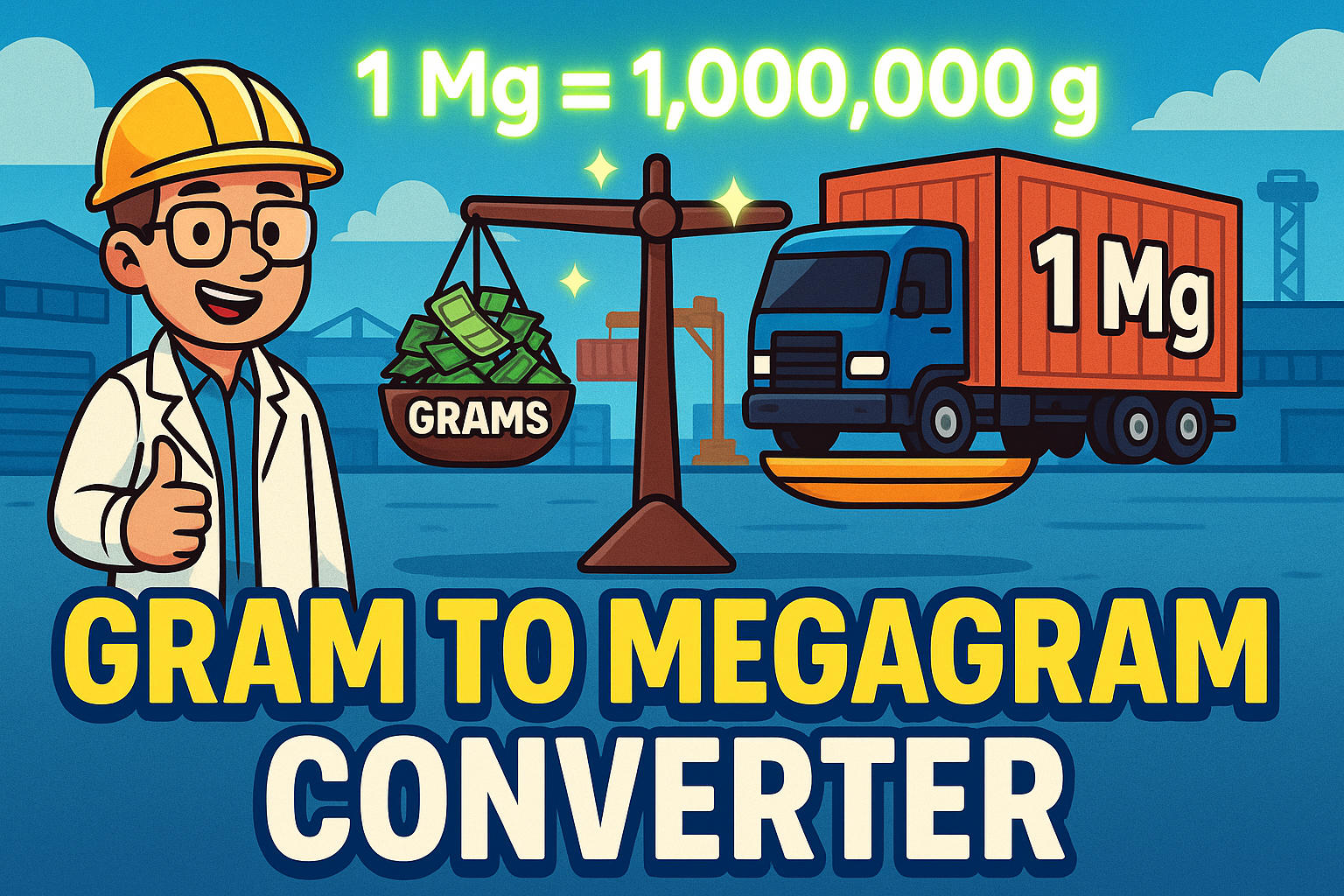Gram to Microgram – How to convert g to μg
Whether you're studying science, preparing medication, or handling lab data, converting grams to micrograms is a fundamental skill. Micrograms (μg) are essential in fields that demand microscopic accuracy, from pharmaceuticals to environmental science. With Jetcalculator’s Gram to Microgram Converter, you can convert instantly and avoid calculation errors. You can also explore other precise units with our Unit Converter.
Gram and a Microgram
-
Gram (g) is a basic metric unit of mass, commonly used to measure ingredients, chemicals, and small physical objects. 1 gram = 1,000 milligrams = 1,000,000 micrograms. It’s one of the most widely used mass units in science, health, and cooking.
-
Microgram (μg) — sometimes written as mcg (especially in nutrition and medicine) — is a metric subunit of mass equal to one-millionth of a gram:
1 μg = 0.000001 grams = 10⁻⁶ g
It’s often used to measure vitamins, hormones, contaminants, and chemical concentrations.
Looking for in-between steps? You might find our Gram to Milligram Converter, Milligram to Microgram Converter, or Weight Conversion useful too.

How to Convert Gram to Microgram
The formula is straightforward:
Microgram = Gram × 1,000,000
Examples:
-
0.005 g → 0.005 × 1,000,000 = 5,000 μg
-
1 g → 1,000,000 μg
-
0.0001 g → 100 μg
Need to go the other way? Just divide by 1,000,000. For precise results, use Jetcalculator’s Gram to Microgram Converter or try the broader Weight Converter Tool for other mass units.
Did You Know?
-
Gram:
• A standard paperclip weighs about 1 gram, making it a common real-life size reference.
• The gram was once defined as the mass of one cubic centimeter of water at 4°C — the temperature of maximum density.
• In postal services, small packages and letters are priced based on weight in grams.
• The gram is also used to calibrate precision balances in classrooms and chemistry labs. -
Microgram:
• The term microgram comes from the Greek mikros (small) and gramma (a weight).
• Some toxins, like botulinum toxin, are lethal at doses below 1 microgram.
• In astronomy, microgram-scale dust particles are tracked in meteor studies and space missions.
• Allergy tests often involve substances measured in micrograms to ensure safe exposure levels.
A Real-Life Case: The Thyroid Dose Mix-Up
In 2011, a medical facility mistakenly prescribed milligrams (mg) instead of micrograms (μg) of a thyroid hormone supplement to patients. Since 1 mg = 1,000 μg, some patients received 1000x the intended dose, leading to hospitalizations and investigations.
This incident underscores why unit conversion accuracy — especially for tiny weights — isn’t just academic, it’s a matter of health and safety.

Conclusion
From scientific experiments to supplement labels, converting g to μg is part of everyday accuracy. Whether you're measuring a vitamin, balancing a lab formula, or learning the metric system, Jetcalculator’s Gram to Microgram Converter gives you precise results in a second. Explore our full Conversion Tool to keep mastering measurements big and small.

